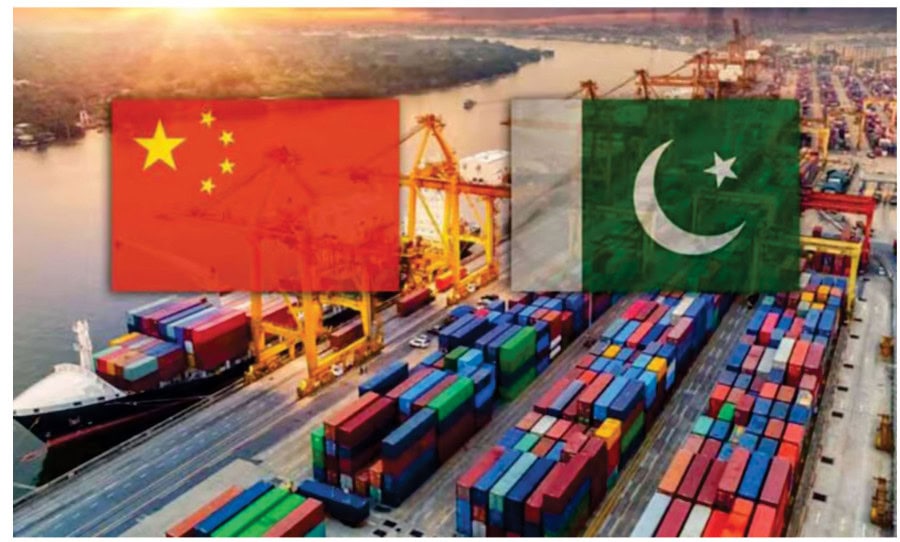The China-Pakistan Economic Corridor (CPEC) has become a comerstone of Pakistan’s economic and strategic vision. As one of the most ambitious projects in modern history, CPEC is not just an infrastructural development initiative but a multifaceted partnership that promises to shape the future of Pakistan and the broader region. With its unparalleled potential to foster economic growth, improve trade connectivity and strengthen ties with neighboring countries, CPEC is poised to transform Pakistan’s economic landscape for years to come.
A Game-Changing Infrastructure Project: The CPEC initiative, launched in 2015, connects the deep seaport of Gwadar in Pakistan’s southwestern Balochistan province to China’s Xinjiang region via a network of roads, railways and pipelines. Spanning over 3,000 kilometers, the corridor is expected to serve as a gateway for trade between China, Pakistan and Central Asia, making Pakistan an essential hub for regional connectivity.
At its core, CPEC seeks to revolutionize Pakistan’s infrastructure. The construction of modern highways, including the Lahore-Karachi Motorway and the development of the Gwadar port, has already. enhanced trade routes, significantly reducing travel time and costs. The expansion of Pakistan’s energy sector through CPEC is also noteworthy, as numerous power plants are being set up to address the country’s energy shortages, which have long been a hindrance to industrial growth.
Through these infrastructural improvements, CPEC is expected to unlock Pakistan’s economic potential by attracting foreign investment, boosting trade and creating a vast number of jobs. The long-term economic benefits of this project. are vast, positioning Pakistan as a regional leader in trade and connectivity. Energy and Economic Growth: One of themost impactful aspects of CPEC is its focus on alleviating Pakistan’s energy crisis. With a growing demand for electricity, Pakistan’s energy sector has struggled to meet its needs, resulting in power outages that stifle industrial productivity. CPEC addresses this issue directly by establishing a series of power plants and energy-related infrastructure projects, which will generate thousands of megawatts of electricity.
Projects like the Karot Hydropower Plant and the coal-based power stations in Thar are expected to add substantial capacity to the national grid, ensuring the long-term energy security of the country. With more stable power supplies, industries will be able to operate more efficiently and Pakistan will become a more attractive destination for foreign investors seeking a stable. business environment.
The energy and infrastructure components of CPEC also have a profound effect on Pakistan’s overall economy. The improved logistics and transportation networks will reduce the cost of doing business, opening up new avenues for trade and manufacturing. As the region becomes more connected, Pakistan’s role as a trade hub for goods moving between China, Central Asia and the Middle East will become increasingly vital. Strengthening Bilateral Relations: CPEC Is more than just an economic project-it represents a deepening of the strategic ties between Pakistan and China. The relationship between the two countries has long been one of mutual respect, cooperation and shared interests. CPEC is the manifestation of this relationship, highlighting China’s commitment to Pakistan’s growth and prosperity.
Recent visits to China by key political figures, including President Asif Ali Zardari and Punjab Chief Minister Maryam Nawaz, have reinforced the significance of Pakistan-China bilateral ties. President Zardari’s visit, in particular, highlights Pakistan’s commitment to further strengthening this partnership. During his visit, Zardari emphasized the mutual benefits of CPEC, focusing on its potential to enhance regional stability and economic cooperation. His discussions with Chinese leaders underscored how CPEC can serve as a catalyst for broader regional collaboration, facilitating new trade routes for landlocked Central Asian nations while offering Pakistan greater access to global markets.
Zardari’s visit also focused on enhancing bilateral cooperation in sectors such as agriculture, technology and education. Pakistan has long recognized China’s role as a global leader in innovation and through CPEC, Pakistan stands to benefit from China’s technological advancements. This collaboration could lead to the establishment of new research and development centers, driving innovation and fostering economic diversification within Pakistan.
The future of CPEC holds great promise, not just for Pakistan but for the entire region. As the project unfolds, it will drive regional integration, with Gwadar port serving as a key asset by offering Pakistan direct access to international shipping lanes and acting as an outlet for goods from Central Asia and Western China. Beyond economic benefits, CPEC has the potential to foster social development, creating jobs and Improving infrastructure in underserved areas like Balochistan and Khyber Pakhtunkhwa, thereby reducing regional disparities. With its focus on diversification, CPEC will enable Pakistan to build a more resilient economy, less reliant on traditional industries and better integrated into the global market, solidifying its role as a trade and energy hub and increasing its influence on the world stage.
Challenges and the Road Ahead: CPEC, like any large-scale project, faces several challenges that need to be addressed for its long-term success, Issues related to security, particularly in areas like Gwadar, require constant attention to ensure the safety of investments and personnel. Political instability within Pakistan can complicate decision-making and project implementation, while environmental concerns surrounding large infrastructure projects need to be managed responsibly to promote sustainable development. Despite these challenges, the project continues to progress, with both China and Pakistan demonstrating strong leadership and commitment. Through effective collaboration, transparent governance and innovative solutions, these obstacles can be overcome, ensuring that CPEC’S full potential is realized and it becomes a catalyst for regional growth and prosperity.
Conclusion: CPEC is more than just an infrastructure project-it is a symbol of Pakistan’s bright future. Through this initiative, Pakistan has the opportunity to become a key player in regional and global trade, with improved infrastructure, energy security and economic growth. President Asif Ali Zardari’s recent visit to China exemplifies the strengthening of ties between the two nations, ensuring that CPEC remains at the heart of their collaborative efforts. As CPEC continues to unfold, It promises to be a catalyst for change, offering hope and prosperity for Pakistan and the broader region.










